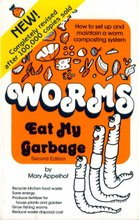Whilst reading the worm composting bible that is Mary Appelhof's
'Worms eat my garbage' I discovered that she suggests to put just one or two handfuls of soil in the bin with the rest being comprised of bedding and organic waste. Given that 95% of my bin is made up of soil I have questioned whether I have been doing things correctly; I concluded that the bin was working fine and there were no obvious problems which may be resulting from the amount of soil in the bin, however it is a new year and so I have decided to change the composition by subtracting around about a bucket full of soil and replacing it with bedding. (see below) The castings and soil that was removed will be put to use very soon-watch this space!
 The book also suggests that you can just add organic waste when you have it, using the rotational placement system and not worry too much about how much food is in the bin. I have also decided that it would be a good idea to place waste at the front of the bin next to the perspex sheet so that I can observe the worms eating the food and get a good idea of how long it takes for certain foods to decompose (see above).
The book also suggests that you can just add organic waste when you have it, using the rotational placement system and not worry too much about how much food is in the bin. I have also decided that it would be a good idea to place waste at the front of the bin next to the perspex sheet so that I can observe the worms eating the food and get a good idea of how long it takes for certain foods to decompose (see above).
Organic waste added: green beans, onion skins, banana skins, lettuce, potato peelings, normal teabags, roasehip infusion teabags, nettle tea leaves, carrot peelings, crushed egg shells.
Whilst carrying out the soil removal I came across many new members of the bin and some which could have been no more than a week old (see images below) and see the video!





1 comment:
That juvenile worm is actually several weeks old. Newly hatched they are significantly smaller and not pigmented. The newly hatched worms are so tiny it is incredibly easy to miss them. If you have a mass hatch out then it looks like someone chopped up threads into tiny pieces. Very difficult to harvest when a large hatching happens all at once.
Post a Comment